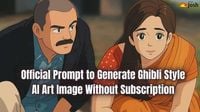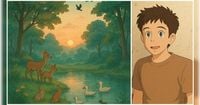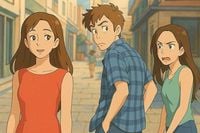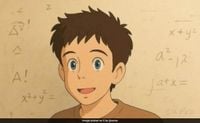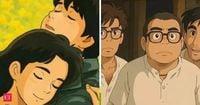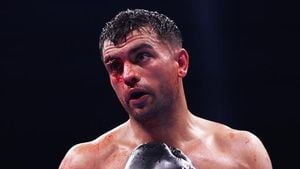OpenAI has made a significant leap in democratizing creativity by unlocking its AI-powered image generation feature for all users, particularly emphasizing its appeal to those inspired by the enchanting art style of Studio Ghibli. As of April 1, 2025, anyone using ChatGPT can create stunning visuals from simple text prompts, marking a transformative moment in the accessibility of advanced AI tools.
Previously, this feature was the exclusive domain of paid subscribers under the ChatGPT Plus, Pro, and Team plans, who enjoyed unrestricted access while free-tier users were limited to generating just three images per day. The announcement, made by OpenAI CEO Sam Altman, was met with excitement and anticipation, as it allows a broader audience to engage with AI-generated creativity.
“ChatGPT image generation now rolled out to all free users,” Altman declared in a post on X (formerly Twitter), emphasizing OpenAI's commitment to open accessibility. He further remarked, “We will not do anything silly like saying that you can't use our open model if your service has more than 700 million monthly active users. We want everyone to use it!” This statement underscores OpenAI's vision of inclusivity in the AI landscape.
The rollout began on March 26, 2025, and culminated on April 1, allowing all ChatGPT users to leverage the tool powered by the advanced GPT-4o model. The demand for this feature has been overwhelming, leading to an unprecedented surge in new accounts—OpenAI reportedly added one million users in just the last hour of the rollout. Altman humorously noted the explosive growth by recalling, “The ChatGPT launch 26 months ago was one of the craziest viral moments I’d ever seen—we hit one million users in five days. We just added one million users in the last hour.”
However, this surge has not come without challenges. OpenAI’s infrastructure faced immense pressure, prompting the company to implement temporary rate limits on image generation. Altman humorously pleaded with users, “Can y’all please chill on generating images? This is insane, our team needs sleep.” This light-hearted appeal reflects the growing pains of a rapidly expanding user base eager to explore the creative potential of AI.
The image generation feature allows users to create detailed and realistic images directly within the chat interface. Users can specify attributes such as aspect ratio and color schemes using hex codes, enhancing their creative control. Additionally, they can upload existing images for modification, providing an interactive platform for artistic expression.
For those interested in generating Studio Ghibli-style images, the process is straightforward. Users can initiate a conversation in ChatGPT, entering a detailed prompt such as, “Create an image of a forest landscape at dawn with animals and birds near a pond in Studio Ghibli style.” The more descriptive the prompt, the better the AI can capture the user's vision. Once the image is generated, users can refine and adjust the output according to their preferences.
OpenAI’s decision to extend this feature to free users aligns with a broader trend in the tech industry, where accessibility and user engagement are becoming increasingly prioritized. This move not only enhances the user experience but also fosters a community of creators eager to explore the intersection of technology and art.
Moreover, the rise of alternative AI image generators has contributed to this creative renaissance. Platforms like DALL.E, Stable Diffusion, Deep Dream Generator, and mobile applications such as Dream by Wombo and Picsart AI offer various ways for users to create AI-generated images. These tools cater to both casual users and tech-savvy individuals, expanding the possibilities for artistic exploration.
For those seeking to create Studio Ghibli-style images specifically, several free applications and websites are available. Grok, developed by xAI, allows users to upload photos or use detailed text prompts to generate visuals inspired by the iconic animation style. Gemini 2.0, Google’s advanced AI model, excels at creating photorealistic and cinematic visuals that capture the essence of Studio Ghibli. Craiyon (formerly DALL-E Mini) offers a simple interface for generating Ghibli-inspired images using basic text prompts.
Fotor features a dedicated Ghibli AI Generator, enabling users to transform their photos into Ghibli-style artwork without the need for a sign-up. Artbreeder allows experimentation with Ghibli-inspired designs, while Deep Dream Generator leverages deep learning to produce dreamlike images that echo the whimsical charm of Studio Ghibli’s animation. Additionally, insMind provides filters designed to capture Ghibli’s unique aesthetic, making it easy for users to create captivating visuals.
As the AI landscape continues to evolve, the integration of image generation into platforms like ChatGPT represents a significant step towards making creative tools more accessible. This democratization of technology empowers users to express themselves artistically, regardless of their background or experience level.
In conclusion, OpenAI’s rollout of its image generation feature to free users marks a pivotal moment in the intersection of AI and creativity. By enabling users to generate Studio Ghibli-inspired images and explore various artistic styles, OpenAI is fostering a new era of artistic expression that invites everyone to participate in the creative process.
